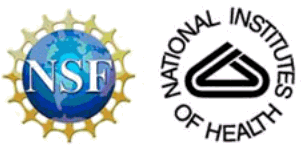|
|
|
|
|
|
|
News & Views item - June 2010 |
![]() What is the Economic Return on R&D Investment. (June 14, 2010)
What is the Economic Return on R&D Investment. (June 14, 2010)
In the June 10, 2010 issue of Nature Colin Macilwain contributes a "News Feature" regarding the return on the investment in scientific research, where "return" refers to the generating of jobs and economic growth.
In a Science editorial in May 2005, on benchmarks for science funding, John Marburger III, then director of the Office of Science and Technology Policy, Executive Office of the President of the United States, called for "econometric models that encompass enough variables in a sufficient number of countries to produce reasonable simulations of the effect of specific policy choices".
Peter Hall, Federation Fellow and Professor of Statistics at The University of Melbourne, noted in the July 2006 issue of the Australian Mathematical Society Gazette: "Current econometric tools... are admittedly rather primitive, although this may be a necessary reflection of the quality and quantity of the available data. More detailed work is needed, Marburger argued, to answer questions such as, 'How much should a nation spend on science? What kind of science? How much from private versus public sectors?'"
What Mr Macilwain's article emphasises is that still in 2010 there is a paucity of worthwhile and sufficient data on which to draw clear-cut conclusions regarding the return on investment (leaving aside the matter of research for knowledge's sake, per se). As Professor Hall points out in his article of four years ago: "[W]hile more advanced econometric techniques would have the capacity to 'torture the data until it confesses', it is unlikely that fancier tools would alter the conclusions drawn by simpler arguments in all four of the reports discussed* — that R&D expenditure in both public and private sectors, education expenditure and IP protection all have very strong, positive impacts on innovation."
Recent events in the United States may begin to go some way to improving the garnering of data to allow a better understanding of the impact on research on "generating jobs and economic growth".

STAR METRICS (Science and Technology for America's Reinvestment: Measuring the Effect of Research on Innovation, Competitiveness and Science) is a US federal government and university partnership which is charged with "developing an empirical framework to measure the outcomes of science investments and demonstrate the benefits of scientific investments to the public. The project is led by the National Institutes of Health (NIH) and the National Science Foundation (NSF) under the auspices of Office of Science and Technology Policy (OSTP)". The approach is being designed to be undertaken in two phases:
- Phase II: The collaborative development of measures of the impact of federal science investment in four broad categories:
Economic growth will be measured through indicators such as patents and business start-ups.
NIH Director Francis Collins views the initiative as yielding: "a rigorous, transparent review of how our science investments are performing. In the short term, we'll know the impact on jobs. In the long term, we'll be able to measure patents, publications, citations, and business start-ups."
John Holdren, the assistant to the President for science and technology and director of the White House Office of Science and Technology Policy believes: "It is essential to document with solid evidence the returns our Nation is obtaining from its investment in research and development; STAR METRICS is an important element of doing just that."
And according to Arden Bement, Jr., retiring NSF director: "This project will greatly help science agencies and the research community collaborate in describing and assessing the impacts of federal investments in science and engineering research and education."
Finally, as Professor Hall points out, what the studies he reviewed: share is the very similar leverage they reveal for two key statistical variables, “Percentage of R&D funded by industry” and “Percentage of R&D performed by universities”. Indeed, the relative leverage that these two items of expenditure have on innovation equals 1.4, 0.9 and 1.0 in the reports of Gans & Stern (2002) and Gans & Hayes (2004, 2006), respectively. Here we define “relative leverage” in terms of the ratio of the regression coefficients. In the case of the most recent report, where the coefficient ratio is almost identical to 1, the statistical significance of the respective coefficients is particularly high.
__________________________________________
*
Gans, J. & Hayes, R. (2004). Assessing Australia’s innovative capacity: 2004 update. IPRIA Report 03/04. www.mbs.edu/home/jgans/papers/Innovation%20Index-2004%20Update.pdf
Gans, J. & Hayes, R. (2006). Assessing Australia’s innovative capacity: 2005 update. IPRIA Report 02/06. www.ipria.org/publications/Reports/AUs%20Innovation%20Index%202006.pdf
Gans, J. & Stern, S. (2003). Assessing
Australia’s innovative capacity in the 21st Century. IPRIA Report.
www.mbs.edu/home/jgans/papers/Innovation Index Australia.pdf
Porter, M.E. & Stern, S. (1999). The New Challenge to America’s Prosperity: Findings from the Innovation Index. Council on Competitiveness Publications Office, Washington, DC. www.compete.org/pdf/innovation.pdf